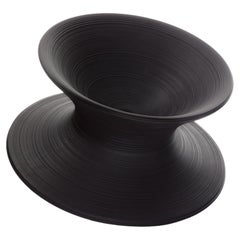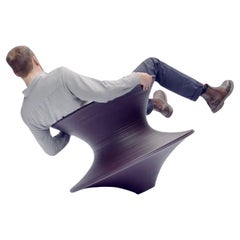Magis Spun
21st Century and Contemporary Italian Chairs
Plastic
Recent Sales
Early 2000s European Modern Rocking Chairs
Polystyrene
People Also Browsed
21st Century and Contemporary Swedish Mid-Century Modern Table Lamps
Textile
21st Century and Contemporary Mexican Mid-Century Modern Table Lamps
Wood, Fabric, Linen, Fiberglass
2010s Oceanic Organic Modern Ottomans and Poufs
Fabric, Foam
21st Century and Contemporary Modern Abstract Sculptures
Cement
Vintage 1970s Italian Coffee and Cocktail Tables
Walnut
21st Century and Contemporary Italian Modern Bookcases
Metal
21st Century and Contemporary Italian Figurative Sculptures
Plastic
21st Century and Contemporary Italian Modern Coffee and Cocktail Tables
Blown Glass
21st Century and Contemporary Italian Mid-Century Modern Sectional Sofas
Silk, Velvet
2010s Indonesian Mid-Century Modern Side Tables
Teak
2010s American Modern Stools
Sheepskin, Wood, Oak
21st Century and Contemporary Italian Chairs
Wool, Plastic
21st Century and Contemporary Italian Mid-Century Modern Dining Room Tables
Travertine
21st Century and Contemporary Italian Chairs
Plastic
21st Century and Contemporary Italian Chairs
Polystyrene
21st Century and Contemporary Italian Chairs
Plastic
Magis Spun For Sale on 1stDibs
How Much is a Magis Spun?
Nanimarquina for sale on 1stDibs
Modern style meets traditional craftsmanship in the graphic and richly colorful rugs that populate nanimarquina’s showrooms. A family-run business based in Barcelona, nanimarquina creates timeless, long-lasting rugs and carpets that bring alluring textures and pops of color into contemporary spaces while paying homage to the ancient traditions associated with carpet-making. Nanimarquina’s ever-evolving exploration of combining the old and the new sets the company apart as a leader in innovative rug design.
In 1961, Spanish industrial designer Rafael Marquina won the FAD Award for his design of an oil cruet. Inspired by her father’s creativity, Nani Marquina studied industrial design at the Escola Massana before pursuing a career in interior design. She discovered that the market for furnishings didn’t exactly offer a wealth of modernist rugs to complement contemporary interiors, so Nani began designing her own textiles in 1982. She founded her eponymous brand In 1987.
Bringing in leading Spanish designers including Pere “Peret” Torrent, Sybilla and Javier Mariscal, nanimarquina quickly became a leader in textile design, garnering praise in Europe as well as the United States.
Marquina traveled to India, Nepal and Pakistan to learn about their rug-making traditions. Inspired by the hard work and skill demonstrated by traditional weavers — and moved by how fundamental rug-making is to the cultural history of these parts of the world — Marquina decided to move the company in a new direction. In 1994, nanimarquina relocated their production facilities to India to work with the region’s talented artisans (today, the manufacturer produces rugs in Nepal, Pakistan and India).
Maria Piera Marquina, Nani’s daughter, now heads the company as CEO, helping nanimarquina continue to expand into the international market and maintain its prominent position as a purveyor of fine textiles worldwide. Over time, the manufacturer’s founder has collaborated with designer and Canary Islands native Elisa Padrón to create the Tres collection, a luxurious line of hand-loomed rugs that is inclusive of textiles intended for both indoor and outdoor spaces. Padrón continues to create rugs for nanimarquina and directs the company’s in-house design team, which includes award-winning designer Ariadna Miquel.
Nanimarquina is as dedicated to the communities that are home to the brand’s facilities as it is to producing quality textiles. The company endeavors to use rug-making to make the world a better place. In collaborating with the Care & Fair association, nanimarquina founded the Kala project, which directs a portion of their earnings to ensure education for their workers and their families. Nanimarquina also uses recycled materials such as bicycle tires in some of their designs and has incorporated the use of biodegradable, eco-friendly materials in the rug-making process.
Nanimarquina’s dazzling designs have earned the company many accolades and international recognition. Their designs have received the Red Dot Award and the IWEC award, among others.
Authentic nanimarquina textiles have been exhibited at the Museum of Modern Art in New York City, Salone del Mobile and at the Council of Human Rights at the United Nations headquarters in Geneva. On the company’s 25th anniversary, nanimarquina’s artisans created a giant patchwork rug as a public art installment in Barcelona. Nanimarquina’s carpets are available through the company’s hundreds of distributors worldwide, and the brand has partnered with the likes of Fendi, Harrods and Rolls Royce.
Find nanimarquina rugs on 1stDibs.
A Close Look at Modern Furniture
The late 19th and early 20th centuries saw sweeping social change and major scientific advances — both of which contributed to a new aesthetic: modernism. Rejecting the rigidity of Victorian artistic conventions, modernists sought a new means of expression. References to the natural world and ornate classical embellishments gave way to the sleek simplicity of the Machine Age. Architect Philip Johnson characterized the hallmarks of modernism as “machine-like simplicity, smoothness or surface [and] avoidance of ornament.”
Early practitioners of modernist design include the De Stijl (“The Style”) group, founded in the Netherlands in 1917, and the Bauhaus School, founded two years later in Germany.
Followers of both groups produced sleek, spare designs — many of which became icons of daily life in the 20th century. The modernists rejected both natural and historical references and relied primarily on industrial materials such as metal, glass, plywood, and, later, plastics. While Bauhaus principals Marcel Breuer and Ludwig Mies van der Rohe created furniture from mass-produced, chrome-plated steel, American visionaries like Charles and Ray Eames worked in materials as novel as molded plywood and fiberglass. Today, Breuer’s Wassily chair, Mies van der Rohe’s Barcelona chair — crafted with his romantic partner, designer Lilly Reich — and the Eames lounge chair are emblems of progressive design and vintage originals are prized cornerstones of collections.
It’s difficult to overstate the influence that modernism continues to wield over designers and architects — and equally difficult to overstate how revolutionary it was when it first appeared a century ago. But because modernist furniture designs are so simple, they can blend in seamlessly with just about any type of décor. Don’t overlook them.
Finding the Right Rugs-carpets for You
Good antique rugs and vintage rugs have made their way into homes across the globe, becoming fixtures used for comfort, prayer and self-expression, so choosing the right area rug is officially a universal endeavor.
In modern usage, “carpet” typically denotes a wall-to-wall floor cushioning that is fixed to the floor. Rugs, on the other hand, are designed to cover a specific area and can easily be moved to new locations. However, the terms are interchangeable in many parts of the world, and, in the end, it won’t matter what you decide to call it.
It’s well known that a timeless Persian rug or vintage Turkish rug can warm any interior, but there are lots of other styles of antique rugs to choose from when you're endeavoring to introduce fresh colors and textures to a bedroom or living room.
Moroccan Berber rugs are not all about pattern. In fact, some of the most striking examples are nearly monochrome. But what these rugs lack in complexity, they make up for in brilliant color and subtle variation. Moroccan-style interiors can be mesmerizing — a sitting room of this type might feature a Moroccan rug, carved wooden screens and a tapestry hung behind the sofa.
Handwoven kilim rugs, known for their wealth of rich colors and unique weaving tradition, are pileless: Whereas the Beni Ourain rugs of Morocco can be described as dense with a thick surface or pile, an authentic kilim rug is thin and flat. (The term “kilim” is Turkish in origin, but this type of textile artistry is practiced all across the Balkans, throughout the Arab world and elsewhere.)
When it comes to eye-catching floor coverings, the distinctive “medallion” pattern of Oushak rugs has two types of rounded shapes alternating against a rich red or blue background created with natural dyes, while the elaborate “star” pattern involves large eight-pointed shapes in diagonal rows alternating with diamonds.
If you’re looking for something unexpected, find a runner rug that pops in your hallway or on your stairs. Dig for dazzling geometric patterns in our inventory of mid-century modern rugs and carpets, which includes works designed by the likes of Swedish textile masters Märta Måås-Fjetterström, Marianne Richter and other artisans.
Carpets and rugs have been around for thousands of years. Prehistoric humans turned to animal skin, wool and fur to craft simple fabrics to soften hard terrain. A 2016 study suggests that "cave lions" were hunted for exactly this purpose, and that decorating your cave with their pelts may have conferred strength and prestige. Although many of these early textiles are still in existence, tracing their precise origins is difficult. Carpets quickly became such a valuable trade commodity that the weavings could easily travel far from their places of origin.
The oldest known carpet was found in southern Siberia. (It may have traveled there from Persepolis in Iran.) For the flat-weave floor rugs crafted by Native Americans, cotton was the primary material before sheep’s wool was introduced in the 16th century. In Europe, carpet-making was fundamental to folk art, and Asian carpets imported to European countries were at one time considered a precious luxury and not intended to remain permanently on the floor.
With the variety of area rugs and carpets rolled out for you on 1stDibs — a collection that includes traditional, modern, minimalist rugs and other coverings of all kinds — things will be looking up whenever you’re looking down.

